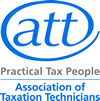 Call us now on 01926 633074
Call us now on 01926 633074

Jeff West is licensed and regulated
by AAT under licence number 13


July 2016 Questions and answers
Newsletter issue - July 2016.
Q1. My mother died last year and left my brother and me a commercial business unit. Probate is nearly complete now. If we sell the property in the future, what are the capital gains tax implications on the sale?
A: I presume that you and your brother are inheriting equal shares in the property. Your acquisition value, for future capital gains tax computation purposes, is the market value at the date of death - known as the 'probate value'. Capital gains tax will be calculated under the normal rules on any increase in value from that date.
Q2. I have recently registered for VAT. I am not very good when it comes to administration and I have heard that the flat rate scheme might help me. How does the scheme work?
A: Broadly, the flat rate scheme for VAT is designed to help small businesses with a turnover of no more than £150,000 a year, excluding VAT, by taking some of the work out of recording VAT sales and purchases.
With the flat rate scheme:
- You pay a fixed rate of VAT to HMRC; and
- You keep the difference between what you charge your customers and pay to HMRC; but
- You can't reclaim the VAT on your purchases - except for certain capital assets over £2,000.
The percentages applicable to this scheme currently vary between 4% and 14.5%, depending on the nature of the services provided. Full details of the scheme are included in the HMRC VAT Notice 733: Flat rate scheme for small businesses, which you can download from the HMRC web site.
In your first year of VAT registration you get a 1% reduction in flat rate, which means that you can take 1% off the flat rate you apply to your turnover, until the day before your first anniversary of becoming VAT registered.
The scheme works well for some but not others. On the positive side, the scheme may save you some admin because you don't have to work out every item of input and output tax, but if your customers are VAT registered, you do have to calculate the VAT and issue VAT invoices in the normal way. Financially, the flat rates averages may work out cheaper for you than normal accounting or you may find this scheme more expensive.
Q3. I have a part time job and I earn about £8,000 a year. As my earnings are less than the tax-free personal allowance, can I transfer the unused amount to my husband?
A: Since April 2015, a spouse or civil partner who is not liable to income tax or not liable above the basic rate for a tax year may transfer part of their personal allowance to their spouse or civil partner, provided that the recipient of the transfer is not liable to income tax above the basic rate. The transferor's personal allowance will be reduced by the same amount. For 2016/17 the amount that can be transferred is £1,100 (£1,060 for 2015/16). The spouse or civil partner receiving the transferred allowance will be entitled to a reduced income tax liability of up to £220 for 2016/17 (£212 for 2015/16). Note, however, that married couples or civil partnerships entitled to claim the married couple's allowance are not entitled to make a transfer. For further information on this, see the gov.uk website at www.gov.uk/marriage-allowance.
 Cookies are small text files that are stored on your computer when you visit a website. They are mainly used as a way of improving the website functionalities or to provide more advanced statistical data.
Cookies are small text files that are stored on your computer when you visit a website. They are mainly used as a way of improving the website functionalities or to provide more advanced statistical data.













